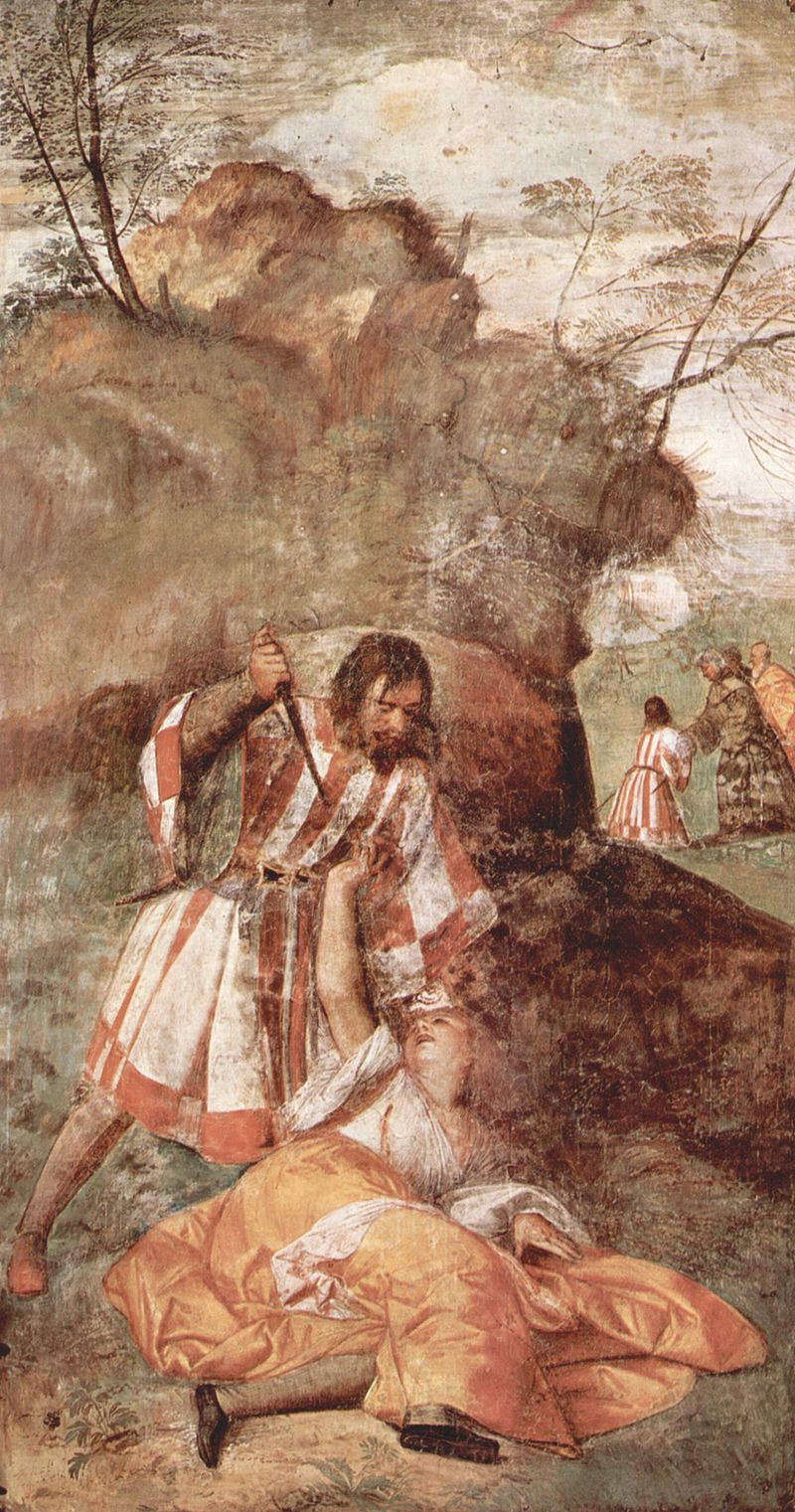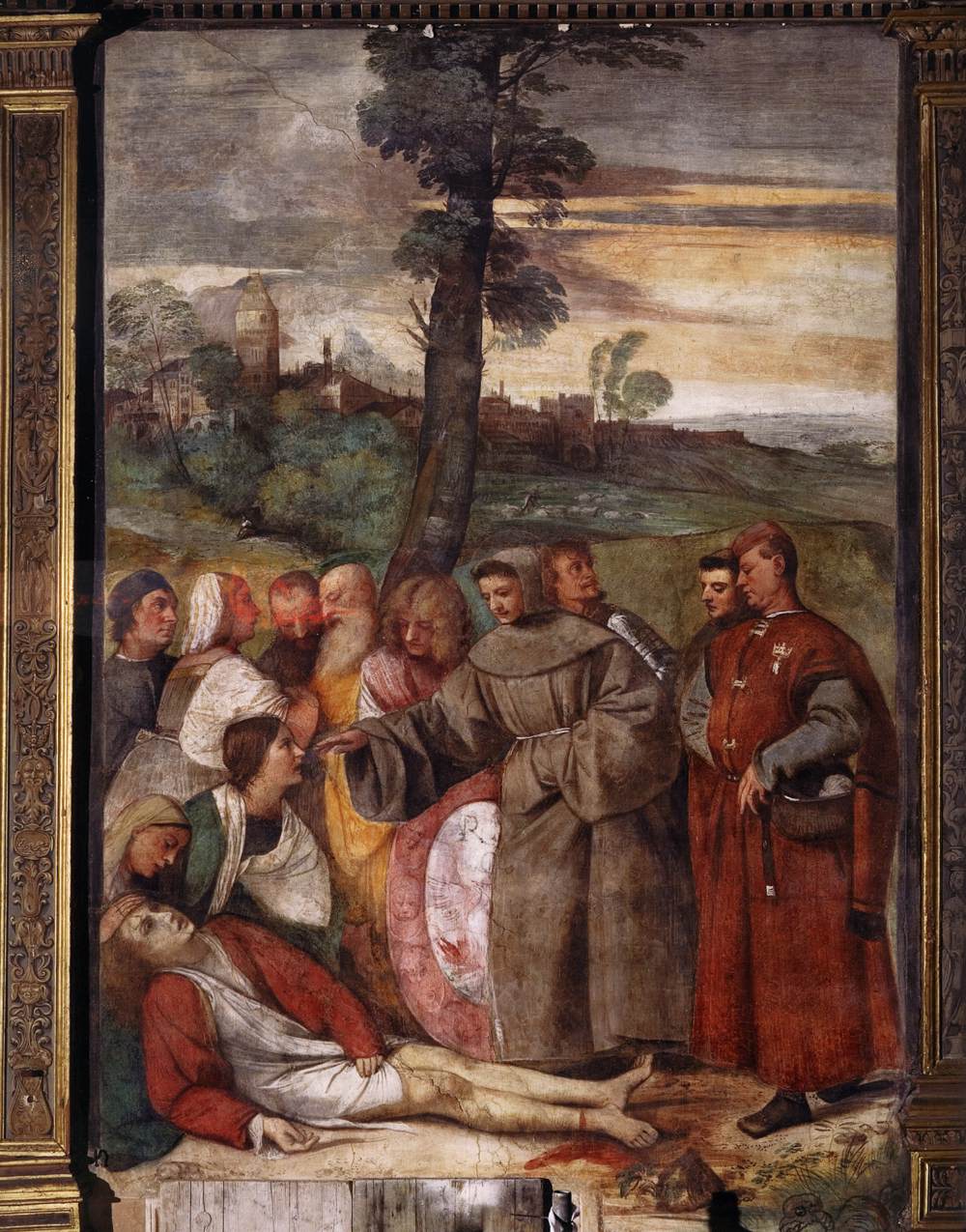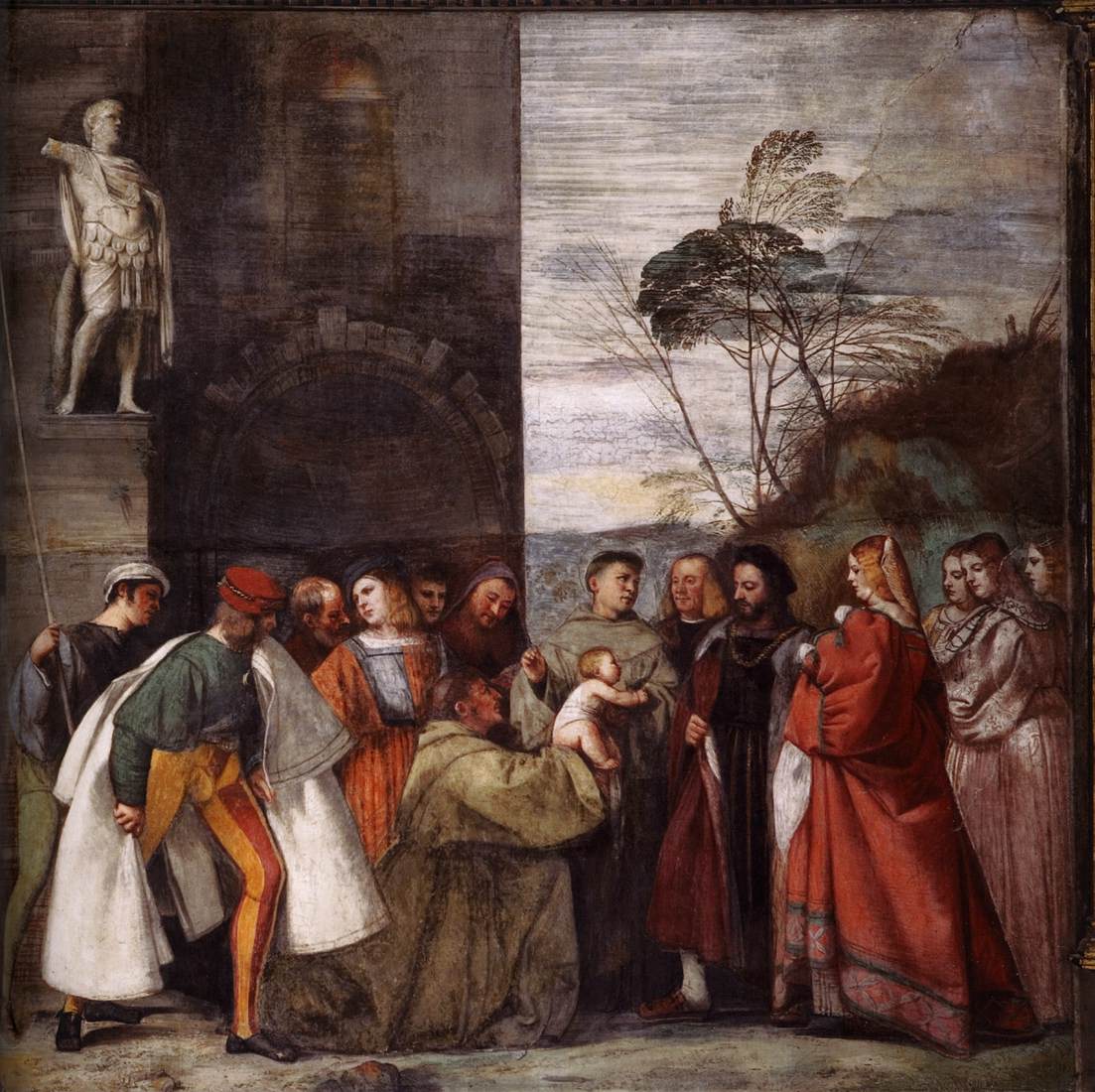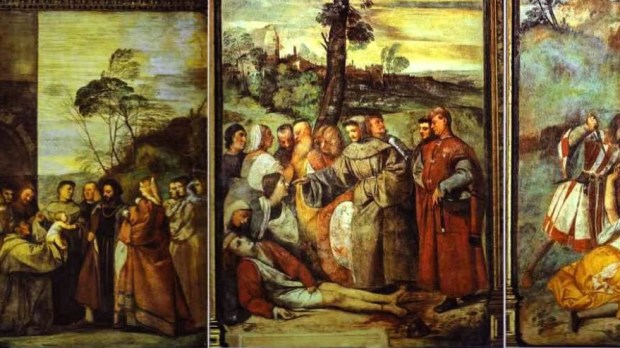Tiziano Vecelli (anglicized as Titian) is one of the greatest painters of the Venetian school of High Renaissance art. Born in the Republic of Venice in 1488-90, Titian had a profound influence on the artistic world his through vivid application of color. His imaginative temperament earned him the title of a poet-painter. The fluidity in his painting, the increasing freedom of brushstroke and his deft ability to grasp personality can be well noted in today’s example.
The subject of the painting is the dearly loved St. Anthony of Padua (1195–1231).
In 1510 an epidemic broke out in the waterlogged port city of Venice. The effect was disastrous. The pestilence took away the life of 32-year-old Giorgione, one of the city’s most celebrated painters and a close associate of Titian. Escaping the contagion, Titian moved to Padua in 1511. It is here that he received one of his first religious commissions to paint three large frescoes in the main hall of the Scuola del Santo, a confraternity devoted to St. Anthony.
Often regarded as a miracle worker (a patron saint of lost people and things), St. Anthony in today’s painting is presented primarily as a “Saint of the People” or as Pope Leo XIII put it, “Everyone’s Saint.” The painting illustrates three turbulent tests, which through the intercession of St. Anthony turn into a testimony of hope and faith. The frescoes are grouped in a frieze-like arrangement with the primary characters in the foreground placed against an atmospheric background that enhances the narrative clarity and the dramatic emphasis.
The first scene recalls the miracle of rescue. The story goes like this: A renowned knight in the city of Tuscany suspected his virtuous wife of adultery. While in a rage, he assaulted her and dragged her by her hair against a cliff. There he eventually stabbed her to death. Realizing with regret the result of his beastly behavior, the knight at once ran to St. Anthony and fervently pleaded for help. The saint, in mercy and compassion, rushed to the house and prayed over the dead wife, asking God to restore her life. Restore He did, and from then on St. Anthony came to be regarded as the patron saint of married couples.

Titian presents the scene with robust and awkward realism. He thrust the murder into the foreground, making the viewer a witness to the crime. The latter part of the story is depicted in the background where the repentant husband kneels before the saint begging for forgiveness.
Scene two illustrates the second miracle. A wrathful son kicked his mother in anger. When he confessed to the saint, the friar remarked “the foot that strikes mother or father deserves to be cut off.” Taking a literal view of things, the young boy on returning home took a hatchet and chopped off his foot. Repenting of his foolish behavior, his family rushes him to the Franciscan saint. The boy is laid on the ground, his face distorted in pain with his bleeding foot set before him. In a comforting gesture, St. Anthony stretches out his hand and brings relief to the young man by reattaching his foot. The large oak tree at the center of the composition serves as a reminder of the absolute fervor and faith of the great saint.

Scene three is set across an architectural background. It presents to us the third miracle in this series of paintings. A nobleman of Ferrara married a woman of remarkable virtues and extraordinary beauty. Jealous of her gifts, the husband doubted his wife’s fidelity when she conceived. On being accused in public, the helpless wife called for the renowned friar. St. Anthony on arrival turned to the newborn and with childlike simplicity asked him, “Who is your father, my little one?”
The crowd roared in laughter. “Can a newborn speak?” they acclaimed. However, much to their astonishment, the child pointed out to the nobleman and in a clear voice replied, “This is my father.” Putting the child into the arms of the delighted parents, St. Anthony through his ardent intercession restored peace and joy into their household.

The essence of the painting emerges through various gestures and expressions. While the crowd exchange glances of surprise and bewilderment, the saint is depicted on his knees in humility and love. His posture lies in stark contrast to the heroic demeanor of the ruler Trajan, whose statue fills the niche of the archaic structure in the background. Trajan (98–117), the Roman Emperor, is honored as “the best ruler,” for he presided over the greatest military expansion in Roman history. But did winning the world win him his soul? St. Anthony quips, “The life of the body is the soul and the life of the soul is God. What we are before God we are and nothing more.”
As we gaze at the kneeling posture of the saint, we are at once reminded of his signature portrayal. St. Anthony is always depicted with Christ Child in his arms. As he lifts the infant towards the parents, he returns to them not only their little babe but also Jesus, the source of true peace and happiness.
Though a great doctor of the Church, St. Anthony in simplicity and humility calls us not so much to theological debates, but rather to faith in action and love. He who bears Christ Child lovingly in his arms invites us to a child-like faith and spontaneous surrender to the Savior!
This article was published in partnership with Indian Catholic Matters.

